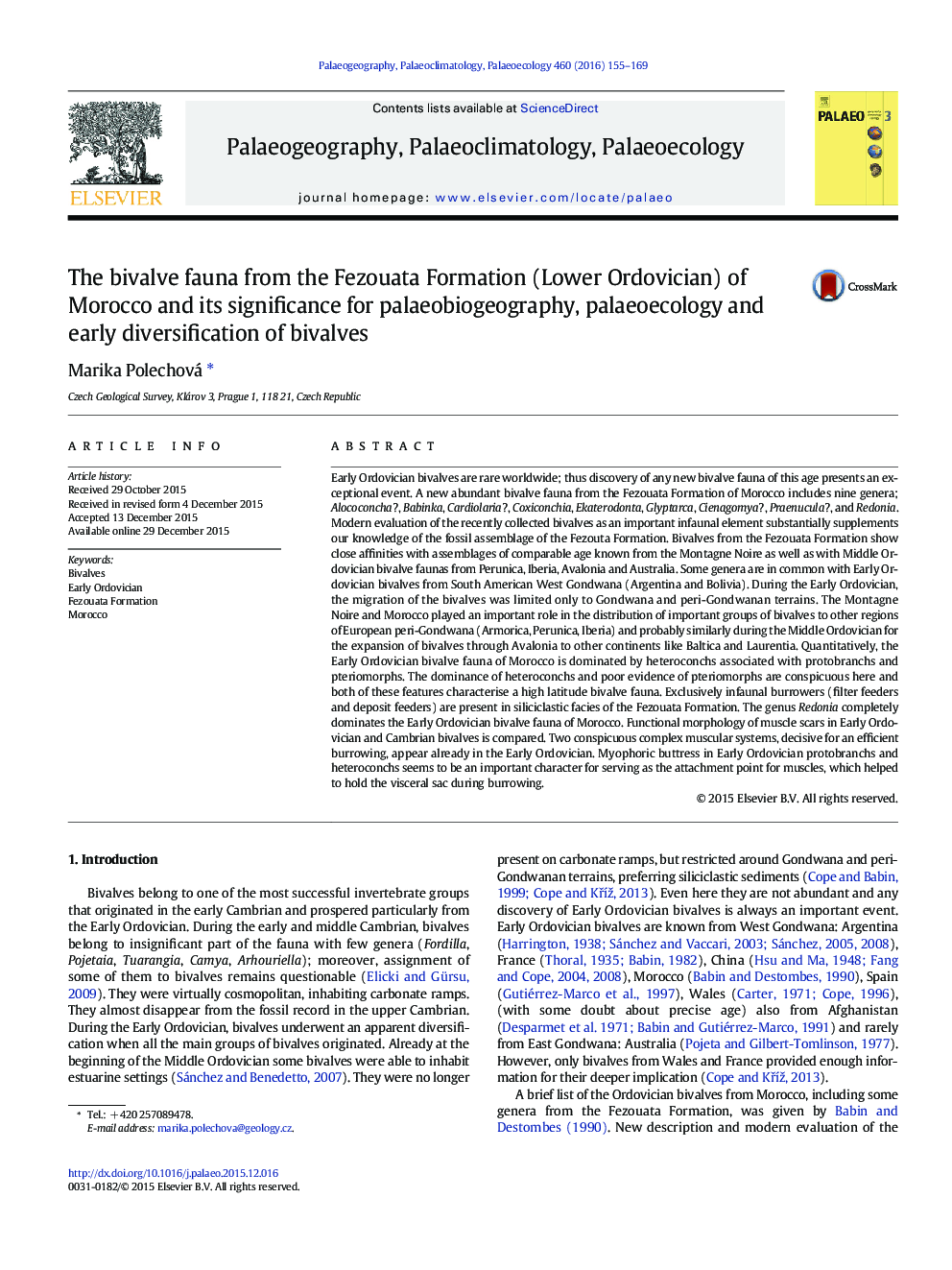| کد مقاله | کد نشریه | سال انتشار | مقاله انگلیسی | نسخه تمام متن |
|---|---|---|---|---|
| 4465570 | 1622131 | 2016 | 15 صفحه PDF | دانلود رایگان |

• Infaunal bivalves from the Fezouata Formation are described
• Montagne Noire and Morocco as important areas for the early diversification of bivalves
• Two types of muscular systems for efficient burrowing in the Early Ordovician bivalves
Early Ordovician bivalves are rare worldwide; thus discovery of any new bivalve fauna of this age presents an exceptional event. A new abundant bivalve fauna from the Fezouata Formation of Morocco includes nine genera; Alococoncha?, Babinka, Cardiolaria?, Coxiconchia, Ekaterodonta, Glyptarca, Cienagomya?, Praenucula?, and Redonia. Modern evaluation of the recently collected bivalves as an important infaunal element substantially supplements our knowledge of the fossil assemblage of the Fezouta Formation. Bivalves from the Fezouata Formation show close affinities with assemblages of comparable age known from the Montagne Noire as well as with Middle Ordovician bivalve faunas from Perunica, Iberia, Avalonia and Australia. Some genera are in common with Early Ordovician bivalves from South American West Gondwana (Argentina and Bolivia). During the Early Ordovician, the migration of the bivalves was limited only to Gondwana and peri-Gondwanan terrains. The Montagne Noire and Morocco played an important role in the distribution of important groups of bivalves to other regions of European peri-Gondwana (Armorica, Perunica, Iberia) and probably similarly during the Middle Ordovician for the expansion of bivalves through Avalonia to other continents like Baltica and Laurentia. Quantitatively, the Early Ordovician bivalve fauna of Morocco is dominated by heteroconchs associated with protobranchs and pteriomorphs. The dominance of heteroconchs and poor evidence of pteriomorphs are conspicuous here and both of these features characterise a high latitude bivalve fauna. Exclusively infaunal burrowers (filter feeders and deposit feeders) are present in siliciclastic facies of the Fezouata Formation. The genus Redonia completely dominates the Early Ordovician bivalve fauna of Morocco. Functional morphology of muscle scars in Early Ordovician and Cambrian bivalves is compared. Two conspicuous complex muscular systems, decisive for an efficient burrowing, appear already in the Early Ordovician. Myophoric buttress in Early Ordovician protobranchs and heteroconchs seems to be an important character for serving as the attachment point for muscles, which helped to hold the visceral sac during burrowing.
Journal: Palaeogeography, Palaeoclimatology, Palaeoecology - Volume 460, 15 October 2016, Pages 155–169